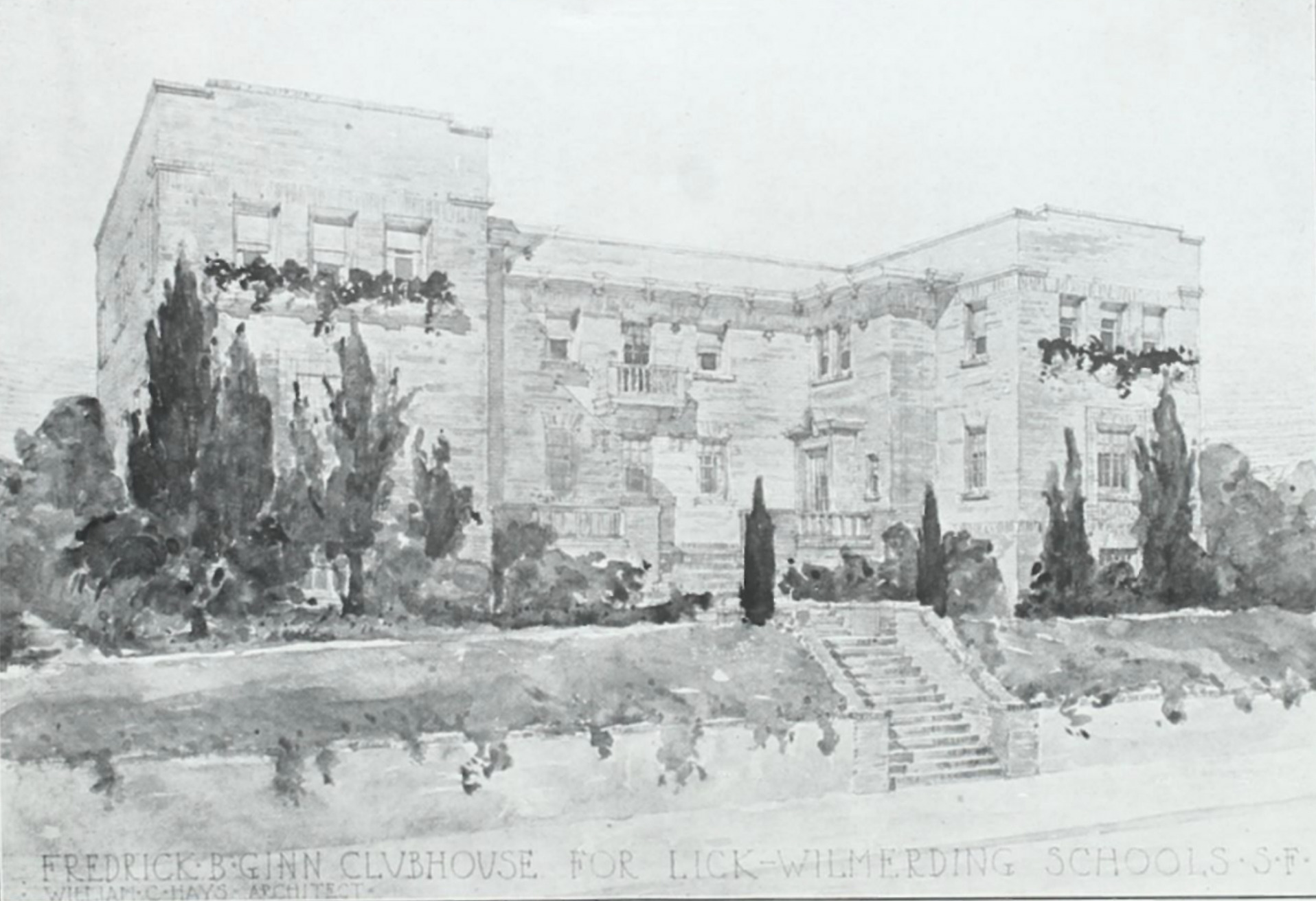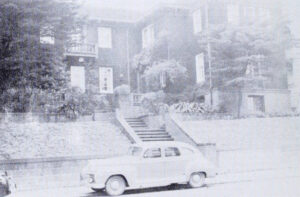
Courtesy of the LWHS Archives
Lick-Wilmerding High School is committed to public purpose and has been since its inception. The Ginn Home, opposite the school’s original Potrero Street campus, was a large house built by the California School of Mechanical Arts and the Wilmerding School of Industrial Arts to accommodate orphaned boys that wanted to attend the schools.
Frederick B. Ginn was an Oakland resident and a founder of Ginn & Company, a publisher widely known for its catalog of school and college texts. On December 6, 1907, about a year after he left the company, Mr. Ginn, 77 years old, passed away. He left money in his will to multiple universities and high schools, including the Lick and Wilmerding Schools.
Mr. Ginn bequeathed approximately $20,000 for housing boys from the Protestant Orphan Asylum who attended either Lick or Wilmerding. The funds were originally used to accommodate five students from either school each year. The original house was a block away from the Wilmerding school, and was functional for six years until the widow of Mr. Ginn added another $23,000 to the fund.
With the large surplus, planning began for a new house to accommodate more boys. The Ginn Home, as it was named, was built across the street from the Lick and Wilmerding campuses in 1915. The front of the house faced the front of the Wilmerding school and was 100 feet in length.

Courtesy of the LWHS Archives
The house was opened on January 1, 1916, and accommodated about 20 boys at a time. In its early years, it served mainly to give room and board to orphaned boys attending the schools. However, with the ability to house them in the Ginn Home, the Lick and Wilmerding schools soon began enrolling children that lived further away in the countryside. The home also was a revolving door residence for Lick and Wilmerding alumni.
The Ginn Home was the headquarters for all school interests, most prominently the alumni association. The first housemother of the Ginn Home, Mrs. Carrie Dinsmore Howland, was an active member in alumni affairs, and she held almost all alumni events within the home. There were frequent reunions and “card parties,” in which alumni would come together to play card games.
Today, LWHS awards a graduating senior the “Carrie Dinsmore Howland Award” at the end of each year; the senior is nominated by the admin, faculty and staff. “This award, given to a graduating senior, is a student who embodies the spirit of LWHS—dedication to their coursework, being active and inclusive in the community and leadership, and representing the school with pride.”
The Ginn Home only housed boys. However, it was cared for by the girls of the Lick-Wilmerding-Lux community. In practicing their housekeeping skills, the girls from the Lux School for Industrial Training for Girls cooked and cleaned for the boys in the home.
There were many instances in which ordinary students of Lick-Wilmerding-Lux engaged with the Ginn Home. Much of the furniture and clothing in the house were created by Lick-Wilmerding-Lux students. A student made the house’s dining tables in the Cabinet Shop and another made polished napkin rings in the Pattern Shop.
The Ginn Home was the meeting spot of many clubs, such as the Glee Club. Picnics were also often held in the house, and students were able to enter the house like any other building on campus. “The tradition of congeniality and friendliness is extended to make the boys feel at home,” according to the 1942 edition of L.W.L Alumni News.
Most of the boys living in the Ginn Home were from remote counties around California, including in Southern California. Some were from Washington and Oregon. LWHS even expanded to welcome international students — from Canada, Venezuela, Argentina, Nigeria, Cuba and the Arabian Peninsula. Many of the international boys did not speak English and worked with the housemother to learn.
A Ginn Home resident named Donald Strandberg, 1919, wrote a letter published in L.W.L Life, the school’s student publication. He described life in the Ginn Home, which included an Astronomy class offered at night in the house’s rooftop garden. In addition to Astronomy, the boys at the Ginn Home had lessons on how to “act properly.” The boys were not allowed to leave the house without an escort.
Beginning in 1940, however, the residents of the Ginn Home had agency over the house. The boys managed it on their own, providing house laws, regulations and penalties.
The Lick-Wilmerding-Lux schools decorated the house for and celebrated students’ birthdays, Christmas and Thanksgiving, each with a “family dinner.” Strandberg explained that although the food was served daily in Lick’s cafeteria, the Ginn Home also provided meals, which is where he ate most days.
To attempt to offset the costs of food and maintenance of the house — as Lick and Wilmerding were both tuition-free at the time and needed to find a mode of revenue to run the house — alumni and other borders (those not homeless or orphaned) had to pay to live in the house. Any boys living in the Ginn House were able to work at Lick-Wilmerding-Lux to help meet the expenses. In 1947, expenses such as food, repairs, utilities, telephone, laundry and wages of the housemother and nurse totaled $4,072. The receipts for the room and board totaled $3,995. The cost to the school was $77, to cover the difference between the house’s income and its expenses.
During its active years, the house continued to take care of orphaned and out-of-town students, housed some teachers, and, briefly during the 1920s, the school’s football team.
“The house across the street,” as it was known by the community, might have closed when LWHS moved campuses in 1955, as records of the Ginn Home seem to disappear around that time. LWHS now uses the Frederick B. Ginn Trust to provide scholarships to current students.

Courtesy of the LWHS Archives
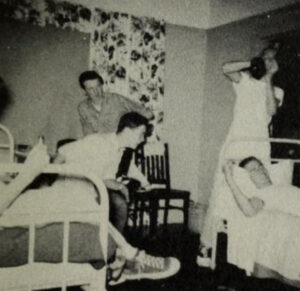
Courtesy of the LWHS Archives

Courtesy of the LWHS Archives
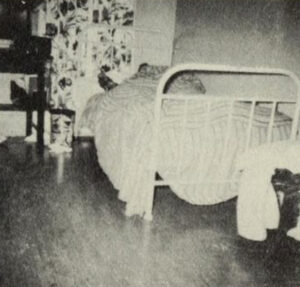
Courtesy of the LWHS Archives
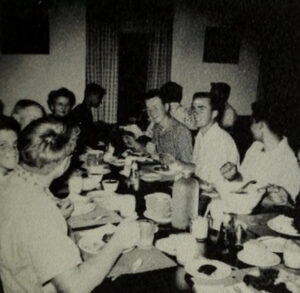
Courtesy of the LWHS Archives
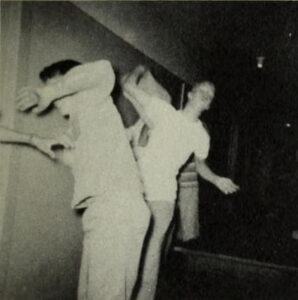
Courtesy of the LWHS Archives
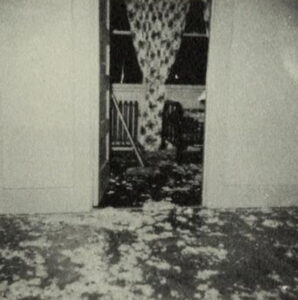
Courtesy of the LWHS Archives
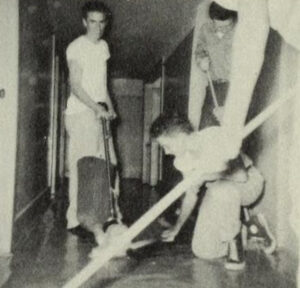
Courtesy of the LWHS Archives



